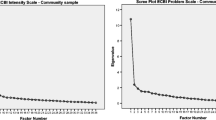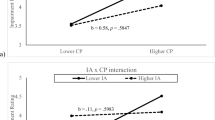Abstract
The PDD Behavior Inventory (PDDBI) is a rating scale filled out by parents and teachers that is designed to assess response to intervention in children with PDD. It consists of subscales that measure both maladaptive and adaptive behaviors and also provides a summary “Autism Score” reflective of the severity of the condition. The scale has been shown to have very good internal consistency as well as developmental and construct validity. In this study, the PDDBI's criterion-related validity was assessed. Correlations with the Childhood Autism Rating Scale and the Autism Diagnostic Interview-Revised were good. Selected maladaptive scales from the PDDBI correlated well with comparable factors of the Nisonger Child Behavior Rating Form. The adaptive sections of the PDDBI correlated highly with the Griffiths Mental Development Scales and with the Vineland Adaptive Behavior Scales. These results confirm the validity of the PDDBI and suggest that the scale will have value in assessing treatment-related changes in maladaptive and adaptive behaviors associated with PDD.
Similar content being viewed by others
References
Aman, M. G., Tasse', M. J., Rohajn, J., & Hammer, D. (1996). The Nisonger CBRF: A child behavior rating form for children with developmental disabilities. Research in Developmental Disabilities, 17, 41-57.
Cohen, I. L., Schmidt-Lackner, S., Romanczyk, R., & Sudhalter, V. (2003). The PDD Behavior Inventory: A rating scale for assessing response to intervention in children with PDD. Journal of Autism and Developmental Disorders, 33, 31-45.
Cohen, I. L., Sudhalter, V., Landon-Jimenez, D., & Keogh, M. (1993). A neural network approach to the classification of autism. Journal of Autism and Developmental Disorders, 23, 443-466.
Griffiths, R. (1984). The abilities of young children: A comprehensive system of mental measurement for the first eight years of life. (Revised ed.). Bucks, U.K.: A.R.I.C.D. The Test Agency Limited.
Lord, C., Rutter, M., DiLavore, P. C., & Risi, S. (1999). Autism Diagnostic Observation Schedule (ADOS). (Manual ed.). Los Angeles: Western Psychological Services.
Lord, C., Rutter, M., & Le Couteur, A. (1994). Autism Diagnostic Interview–Revised: A revised version of a diagnostic interview for caregivers of individuals with possible pervasive developmental disorders. Journal of Autism and Developmental Disorders, 24, 659-685.
Schopler, E., Reichler, R. J., & Renner, B. R. (1988). The Childhood Autism Rating Scale. Los Angeles: Western Psychological Services.
Sparrow, S. S., Balla, D. A., & Cicchetti, D. V. (1984). Vineland Adaptive Behavior Scales. Interview Edition. Survey Form Manual. Circle Pines, MN: American Guidance.
Author information
Authors and Affiliations
Rights and permissions
About this article
Cite this article
Cohen, I.L. Criterion-Related Validity of the PDD Behavior Inventory. J Autism Dev Disord 33, 47–53 (2003). https://doi.org/10.1023/A:1022278420716
Issue Date:
DOI: https://doi.org/10.1023/A:1022278420716




